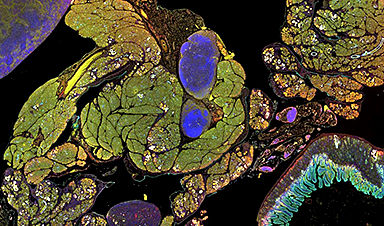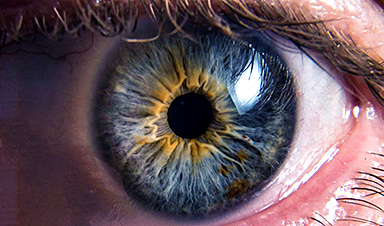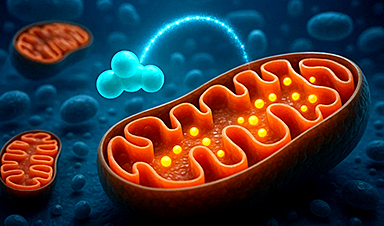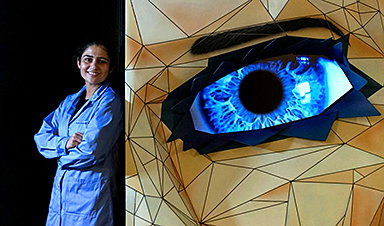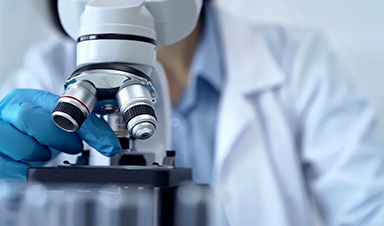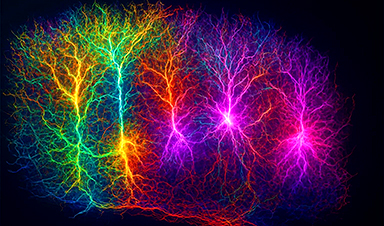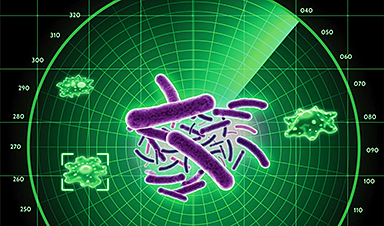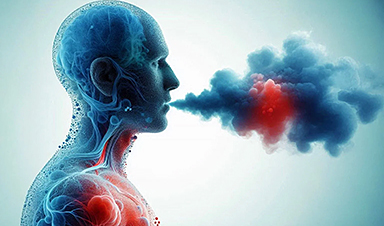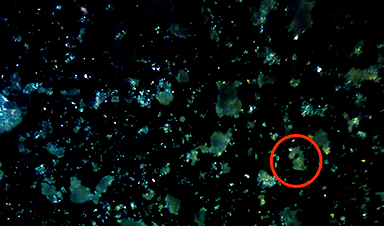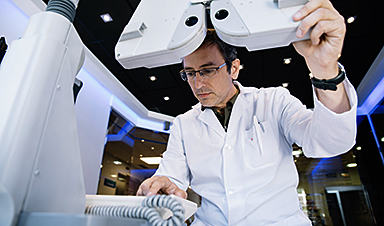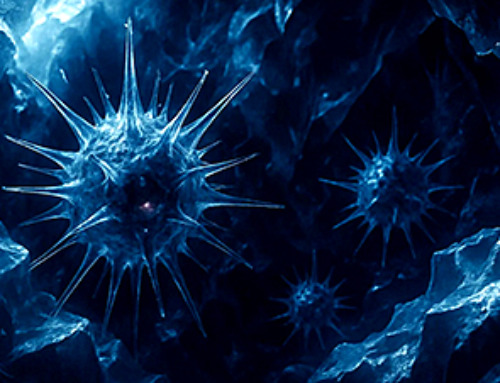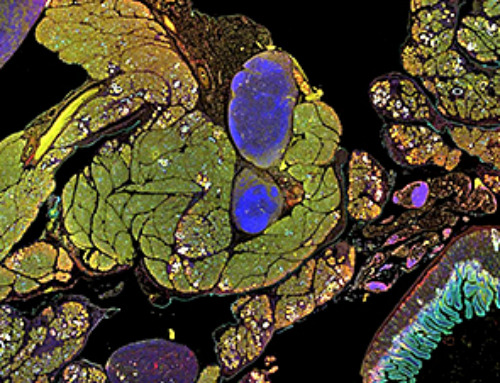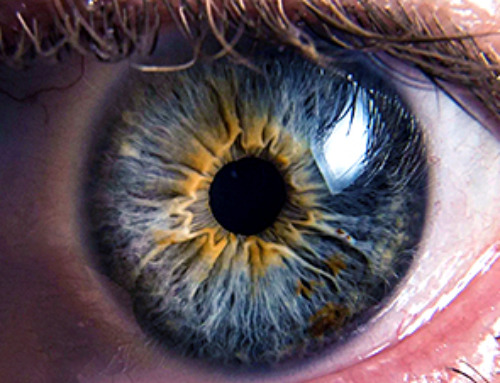One in four people has a mental disorder, according to the World Health Organization. If you’re lucky enough to live in a wealthy country, treatment will usually involve some form of medication—which can cause more issues than it fixes.
The reason for that lies in the depths and complexities of the human mind. It is made up of a maze of pathways that connect the different parts of the brain. They are in turn governed by chemicals that dictate our thoughts, emotions and actions. When a person has psychiatric disorders such as depression, anxiety or addiction, this intricate landscape is often clouded in shadow.
Medicating as a form of treatment touches every part of that complex system, the areas you want to treat and everywhere else besides. However, research is uncovering a light at the end of this metaphorical tunnel—a technique that uses ultrasound to change how the brain behaves.
When people hear the term ultrasound, they probably think of the scans used to monitor the early development of babies in the womb. In that context, it works by emitting gentle waves of sound, and when they bounce off different parts of the body, they create “echoes” that are turned into a moving image.
The notion of using the same methods to modulate brain activity might sound like something out of a sci-fi novel. But it is grounded in solid scientific principles.
Focused ultrasound involves the targeted delivery of sound waves to specific regions of the brain, where they can influence brain activity. And unlike other forms of brain stimulation, such as transcranial magnetic stimulation or deep-brain stimulation, the use of transcranial ultrasound stimulation (TUS) offers several distinct advantages.
For starters, it is non-invasive, meaning there’s no need for surgery or implantation of electrodes. The ultrasound machine is simply positioned onto the hair with gel and delivers ultrasound.
This not only reduces the risk associated with invasive procedures, but also makes it more accessible to a wider range of patients.
Also, focused ultrasound can precisely target deep brain structures with unprecedented accuracy, allowing for personalized interventions that address the root causes of brain disorders, whether neurological, like essential tremor or psychiatric, like addiction.
This level of precision holds the promise of personalized medicine, where treatments can be tailored to individual patients based on their unique brain organization and symptoms.
Vast and varied
The potential applications of focused ultrasound in treating brain disorders are vast and varied. Notably, one of the most remarkable findings is its ability to reduce tremors in individuals with essential tremor by targeting the deep brain regions responsible for excessive movement.
In depression, researchers have also explored its ability to change the activity in the dorsolateral prefrontal cortex—a region of the brain that has been implicated in mood regulation. By gently nudging this area with ultrasound waves, scientists hope to alleviate symptoms of depression and restore balance to the brain’s emotional circuitry.
Similarly, TUS shows promise in anxiety disorders, where aberrant activity in the amygdala—an almond-shaped structure involved in fear and stress responses—can contribute to pathological anxiety. By precisely targeting the amygdala, researchers aim to dial down its hyperactivity, offering relief to those plagued by incessant worry and dread.
Even more complex conditions like addiction, characterized by disruptions in reward sensitivity, cognition and social functioning, may benefit from TUS interventions. Some UK research teams are currently working on a trial looking at its potential to address alcohol addiction. By modulating activity in brain regions associated with reward, the hope is to mitigate the debilitating effects of the disorder and improve patients’ quality of life.
The complexity of psychiatric disorders poses another significant hurdle, and imagining this as a one-size-fits-all solution is perhaps fanciful. But this is a field where treatment options are limited and outcomes vary widely. Against that, the prospect of precise brain interventions that target the root causes of psychiatric disorders could revolutionize psychiatric care and offer hope to millions around the globe.
As the mysteries of the brain are continuously refined and technology can allow us to reach its deeper parts, there is hope that we will find ourselves on the brink of a new era in mental health care, where the shadows of psychiatric disorders are illuminated by the healing power of sound.
This article is republished from The Conversation under a Creative Commons license. Read the original article.
News
Studies detail high rates of long COVID among healthcare, dental workers
Researchers have estimated approximately 8% of Americas have ever experienced long COVID, or lasting symptoms, following an acute COVID-19 infection. Now two recent international studies suggest that the percentage is much higher among healthcare workers [...]
Melting Arctic Ice May Unleash Ancient Deadly Diseases, Scientists Warn
Melting Arctic ice increases human and animal interactions, raising the risk of infectious disease spread. Researchers urge early intervention and surveillance. Climate change is opening new pathways for the spread of infectious diseases such [...]
Scientists May Have Found a Secret Weapon To Stop Pancreatic Cancer Before It Starts
Researchers at Cold Spring Harbor Laboratory have found that blocking the FGFR2 and EGFR genes can stop early-stage pancreatic cancer from progressing, offering a promising path toward prevention. Pancreatic cancer is expected to become [...]
Breakthrough Drug Restores Vision: Researchers Successfully Reverse Retinal Damage
Blocking the PROX1 protein allowed KAIST researchers to regenerate damaged retinas and restore vision in mice. Vision is one of the most important human senses, yet more than 300 million people around the world are at [...]
Differentiating cancerous and healthy cells through motion analysis
Researchers from Tokyo Metropolitan University have found that the motion of unlabeled cells can be used to tell whether they are cancerous or healthy. They observed malignant fibrosarcoma cells and [...]
This Tiny Cellular Gate Could Be the Key to Curing Cancer – And Regrowing Hair
After more than five decades of mystery, scientists have finally unveiled the detailed structure and function of a long-theorized molecular machine in our mitochondria — the mitochondrial pyruvate carrier. This microscopic gatekeeper controls how [...]
Unlocking Vision’s Secrets: Researchers Reveal 3D Structure of Key Eye Protein
Researchers have uncovered the 3D structure of RBP3, a key protein in vision, revealing how it transports retinoids and fatty acids and how its dysfunction may lead to retinal diseases. Proteins play a critical [...]
5 Key Facts About Nanoplastics and How They Affect the Human Body
Nanoplastics are typically defined as plastic particles smaller than 1000 nanometers. These particles are increasingly being detected in human tissues: they can bypass biological barriers, accumulate in organs, and may influence health in ways [...]
Measles Is Back: Doctors Warn of Dangerous Surge Across the U.S.
Parents are encouraged to contact their pediatrician if their child has been exposed to measles or is showing symptoms. Pediatric infectious disease experts are emphasizing the critical importance of measles vaccination, as the highly [...]
AI at the Speed of Light: How Silicon Photonics Are Reinventing Hardware
A cutting-edge AI acceleration platform powered by light rather than electricity could revolutionize how AI is trained and deployed. Using photonic integrated circuits made from advanced III-V semiconductors, researchers have developed a system that vastly [...]
A Grain of Brain, 523 Million Synapses, Most Complicated Neuroscience Experiment Ever Attempted
A team of over 150 scientists has achieved what once seemed impossible: a complete wiring and activity map of a tiny section of a mammalian brain. This feat, part of the MICrONS Project, rivals [...]
The Secret “Radar” Bacteria Use To Outsmart Their Enemies
A chemical radar allows bacteria to sense and eliminate predators. Investigating how microorganisms communicate deepens our understanding of the complex ecological interactions that shape our environment is an area of key focus for the [...]
Psychologists explore ethical issues associated with human-AI relationships
It's becoming increasingly commonplace for people to develop intimate, long-term relationships with artificial intelligence (AI) technologies. At their extreme, people have "married" their AI companions in non-legally binding ceremonies, and at least two people [...]
When You Lose Weight, Where Does It Actually Go?
Most health professionals lack a clear understanding of how body fat is lost, often subscribing to misconceptions like fat converting to energy or muscle. The truth is, fat is actually broken down into carbon [...]
How Everyday Plastics Quietly Turn Into DNA-Damaging Nanoparticles
The same unique structure that makes plastic so versatile also makes it susceptible to breaking down into harmful micro- and nanoscale particles. The world is saturated with trillions of microscopic and nanoscopic plastic particles, some smaller [...]
AI Outperforms Physicians in Real-World Urgent Care Decisions, Study Finds
The study, conducted at the virtual urgent care clinic Cedars-Sinai Connect in LA, compared recommendations given in about 500 visits of adult patients with relatively common symptoms – respiratory, urinary, eye, vaginal and dental. [...]



